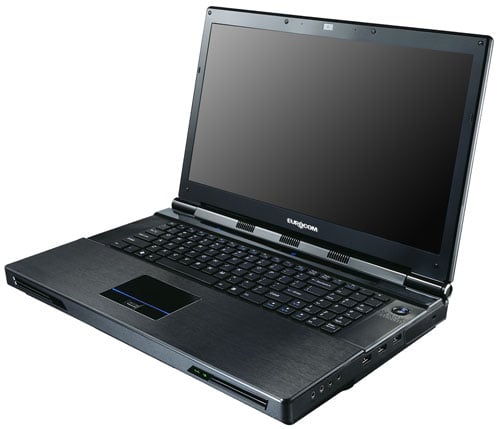AMD Radeon HD 6970M Review w/ Eurocom
Introduction
Less than a month later AMD had another product to release, the AMD Radeon HD 6970M. Code-named Blackcomb, the Radeon HD 6970M is the mobile counterpart to Cayman. This chip is currently AMD's fastest GPU for mobile applications and it's meant for use in high performance gaming and workstation laptops.
In terms of its feature set, Blackcomb is similar to its desktop cousin and we have already covered the architectural details in our review of the desktop model. However, as is the case with all mobile graphics cards, the mobile and desktop models aren't the same chip, despite sharing a model number. Where the desktop Radeon HD 6970 is capable of 2.7 TeraFLOPs, the mobile version can only crank out 1.3TFLOPs, a bit less than half. While that may seem unimpressive, consider that this is the case for virtually all mobile processors and is necessary as a result of the need for power efficiency in mobile applications, something Blackcomb does very well, requiring only about 75-100 watts.
The Radeon HD 6970M is a significant improvement over AMD's previous top dog, the Radeon HD 5870M. Whereas the 5870M had 800 shaders, 1024MB of memory and 128-bit memory bus, the new 6970M has 960 shaders, 2048MB of memory and a 256-bit memory bus. This results in nearly twice the memory bandwidth and more overall processing power.
Here are the highlights:
- Up to 1.31 TeraFLOPs of compute power
- GDDR5 memory Interface
- 256-bit architecture
- 960 Stream Processor Units
- 48 Texture Units
- Extremely power efficient
- PCI Express 2.1 x 16 bus interface
- OpenGL 4.1 support
- UVD 3
- 128 Z/Stencil Render Output (ROP) Units
- 32 Color ROP Units
- AMD HD3D Technology
- AMD EyeSpeed Technology
- AMD’s 2nd generation Eyefinity Multi-display Technology
- AMD Switchable Graphics Technology
- AMD CrossFireX Technology
|
AMD Radeon HD 6000M Series Graphics |
|
|
Code Name |
Brand Name |
|
|
AMD Radeon HD 6900M Series Graphics |
|
Blackcomb-XT |
AMD Radeon HD 6970M |
|
Blackcomb-PRO |
AMD Radeon HD 6950M |
|
|
AMD Radeon HD 6800M Series Graphics |
|
Granville-PRO (GDDR5) |
AMD Radeon HD 6870M |
|
Granville-PRO (DDR3) |
AMD Radeon HD 6850M |
|
Granville-LP (GDDR5) |
AMD Radeon HD 6850M |
|
Granville-LP (DDR3) |
AMD Radeon HD 6830M |
|
|
AMD Radeon HD 6700M Series Graphics |
|
Whistler-XT (GDDR5) |
AMD Radeon HD 6770M |
|
Whistler-PRO (GDDR5) |
AMD Radeon HD 6750M |
|
Whistler-XT (DDR3) |
AMD Radeon HD 6730M |
|
|
AMD Radeon HD 6600M Series Graphics |
|
Whistler-PRO (DDR3) |
AMD Radeon HD 6650M |
|
Whistler-LP (DDR3) |
AMD Radeon HD 6630M |
|
|
AMD Radeon HD 6500M Series Graphics |
|
Capilano-XT (DDR3/GDDR5) |
AMD Radeon HD 6570M |
|
Capilano-PRO (DDR3) |
AMD Radeon HD 6550M |
|
Capilano-LP (DDR3) |
AMD Radeon HD 6530M |
|
|
AMD Radeon HD 6400M Series Graphics |
|
Seymour-XT (GDDR5) |
AMD Radeon HD 6490M |
Since we'll be working with mobile cards, we'll need a suitable mobile platform to run the tests on. Our benchmark platform is the Eurocom Panther 2.0. This is a very large and very powerful desktop replacement (DTR) based on the Clevo X7200 whitebook. Before we get down to the raw numbers, let's first take a quick look around the Eurocom Panther 2.0 and see what it has under its hood.








